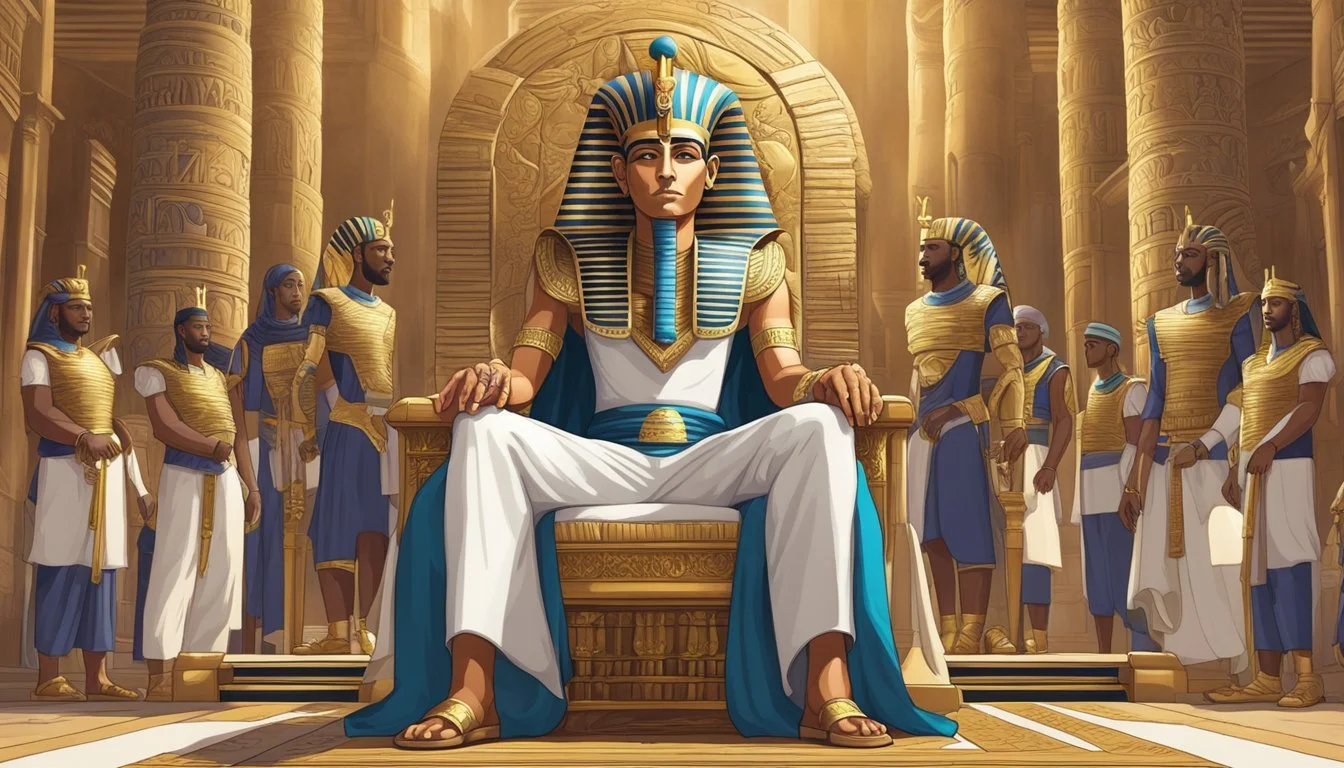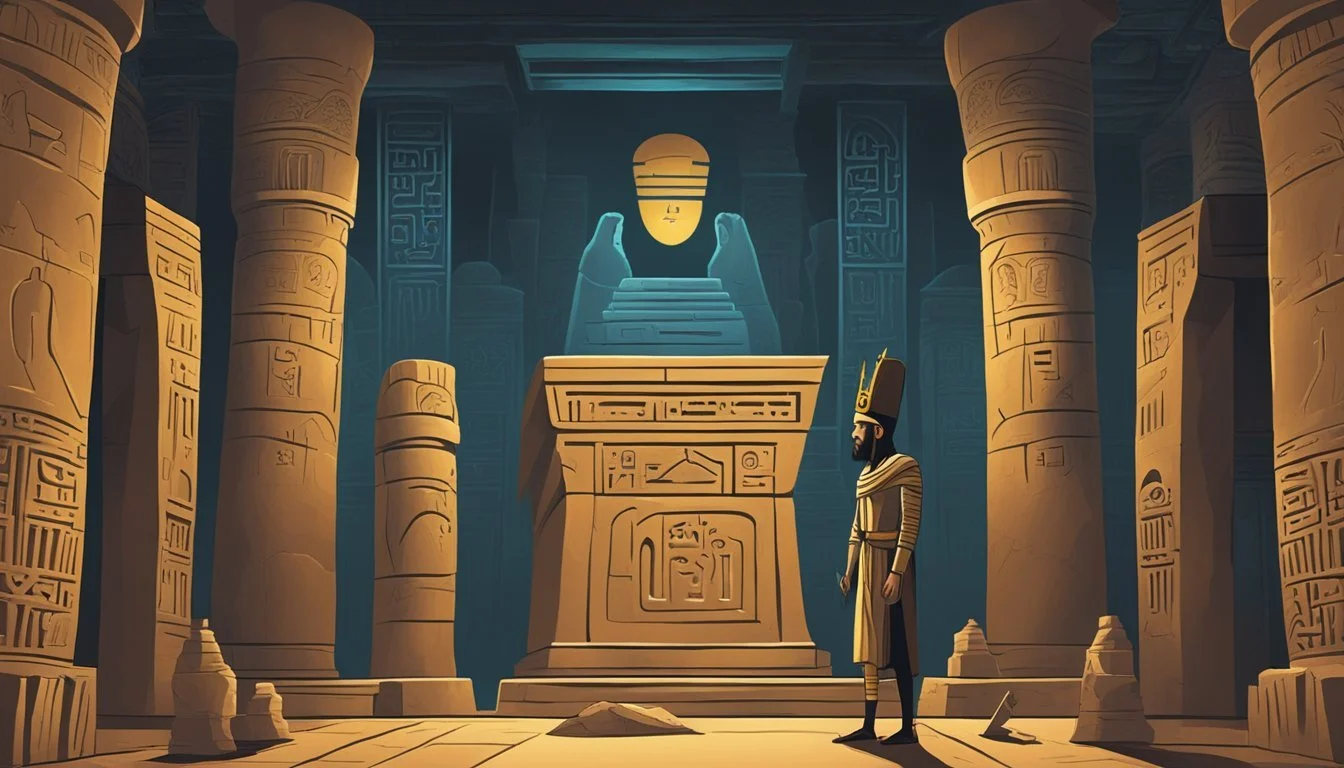Portraying Pharaoh: The Antagonist's Perspective in 'Testament'
Exploring Biblical Villains Through Modern Cinema
Netflix's "Testament: The Story of Moses" offers a fresh take on the biblical narrative by exploring the often-overlooked perspective of Pharaoh. This unique approach sheds light on the complex dynamics between the Egyptian ruler and the Israelite leader, delving into the antagonist's motivations and inner conflicts.
By portraying Pharaoh as a multifaceted character, the series adds depth to the traditional story and challenges viewers to consider the human elements behind historical events. The show's creators aim to spark meaningful conversations about power, faith, and the nature of leadership through this nuanced depiction of the antagonist.
The series examines Pharaoh's character arc as he grapples with the demands of Moses and the supernatural events unfolding in his kingdom. This storytelling technique allows audiences to gain a more comprehensive understanding of the biblical narrative, presenting a balanced view of the conflict between two powerful figures and the cultures they represent.
Dissecting the Antagonist's Role
The Pharaoh serves as a complex antagonist in 'Testament', opposing Moses and shaping the narrative's conflict. His character embodies power, stubbornness, and divine authority, creating a formidable obstacle for the protagonist.
Defining 'Antagonist'
An antagonist is a character who opposes the protagonist, creating conflict and driving the story forward. In 'Testament', the Pharaoh fulfills this role by refusing to release the Hebrew slaves and challenging Moses' divine mission.
The Pharaoh's actions stem from his belief in his own divine right to rule. This conviction clashes directly with Moses' demands, setting up the central conflict of the story.
The antagonist's motivations are rooted in maintaining power and upholding the established order of Egyptian society. These goals put him at odds with the protagonist's mission of liberation and change.
The Arc of the Pharaoh
The Pharaoh's character arc in 'Testament' is marked by increasing resistance and hardening of heart. Initially dismissive of Moses' demands, he becomes progressively more defiant as the plagues unfold.
His stubborn refusal to yield, even in the face of divine intervention, showcases the depth of his conviction and the extent of his power. This unyielding stance drives the narrative tension throughout the story.
The Pharaoh's eventual downfall serves as a cautionary tale about the limits of earthly power when confronted with divine will. His arc concludes with the dramatic pursuit of the Hebrews and the parting of the Red Sea.
Contrasting Protagonist and Antagonist
Moses and the Pharaoh stand as polar opposites in 'Testament'. While Moses represents change, freedom, and divine mandate, the Pharaoh embodies tradition, oppression, and earthly authority.
Their contrasting backgrounds further highlight their differences:
Moses: Raised as Egyptian royalty, but embraces his Hebrew heritage
Pharaoh: Born into power, fully invested in maintaining the status quo
The conflict between these characters drives the narrative forward, with each encounter raising the stakes. Their opposing goals create a series of escalating confrontations, from verbal debates to supernatural demonstrations of power.
The resolution of their conflict ultimately shapes the fate of two nations, underscoring the epic scale of their antagonistic relationship in 'Testament'.
Construction of Narrative Voice
The narrative voice in 'Testament' plays a crucial role in portraying Pharaoh's perspective. It blends distinct character voices with multiple viewpoints to create a rich, layered storytelling experience.
The Uniqueness of Character Voices
In 'Testament', Pharaoh's voice stands out as distinct and authentic. The author crafts his dialogue and inner thoughts to reflect his position of power and cultural context. This characterization goes beyond mere words, incorporating Pharaoh's mannerisms, attitudes, and worldview.
His voice carries the weight of divine authority, often using royal pronouns and commanding tones. The narrative skillfully balances Pharaoh's public persona with his private doubts and fears, creating a complex antagonist.
The use of period-appropriate language and idioms further enhances the authenticity of Pharaoh's voice, immersing readers in ancient Egyptian culture.
Incorporating Multiple Perspectives
'Testament' weaves together various viewpoints to provide a comprehensive narrative. While Pharaoh's perspective is central, the story also incorporates the voices of other characters.
This multi-faceted approach allows readers to see events from different angles. Moses and Aaron's voices provide counterpoints to Pharaoh's decrees. The narrative may include the perspectives of Egyptian officials, Hebrew slaves, and even divine interventions.
These diverse viewpoints create tension and conflict within the story. They highlight the complexities of the situation and challenge readers to consider multiple interpretations of events.
The author uses techniques such as shifting point of view and internal monologues to seamlessly transition between these different perspectives.
Revealing the Backstory
"Testament" unveils Pharaoh's motivations through carefully crafted backstory elements. This approach adds depth to the antagonist's character and provides context for his actions.
Groundwork for the Antagonist's Motive
The film lays the foundation for Pharaoh's perspective through subtle hints and flashbacks. Brief scenes reveal his upbringing as a prince, groomed for leadership from birth. These glimpses show the immense pressure placed on him to maintain Egypt's power and traditions.
Dialogue between Pharaoh and his advisors exposes long-standing fears of foreign influences threatening Egyptian culture. This backstory element explains his resistance to the Israelites' growing presence and influence in Egypt.
The script incorporates references to past conflicts and invasions, highlighting Pharaoh's duty to protect his people. This history shapes his worldview and decision-making process throughout the narrative.
Integration of Backstory into the Present
The film seamlessly weaves Pharaoh's past experiences into current events. His interactions with Moses reveal lingering resentment from their shared childhood, adding complexity to their relationship.
Pharaoh's internal struggle becomes evident as he balances personal beliefs with political necessities. Flashbacks to his education in Egyptian religion underscore his conviction in maintaining the established order.
The backstory influences Pharaoh's reactions to the plagues, revealing his stubbornness as a product of his upbringing and beliefs. His responses are rooted in a deep-seated fear of losing control and disappointing his ancestors.
Subtle visual cues, such as Pharaoh's posture and expressions, reflect his internal conflict as the story progresses. These details connect his past to his present actions, creating a more nuanced antagonist.
Crafting a Compelling Antagonist
Crafting a compelling antagonist requires developing a complex character with depth and sympathetic elements. A well-crafted villain adds tension and conflict to the story, challenging the protagonist in meaningful ways.
Complexity of Characters
Compelling antagonists possess multifaceted personalities and motivations. They have clear goals and reasoning behind their actions, even if misguided. Their backstories provide insight into how they became villains.
Pharaoh in 'Testament' exemplifies this complexity. His desire to maintain power and control stems from a deep-seated fear of losing his divine status. This fear drives his decisions and conflicts with Moses.
Antagonists often possess admirable qualities alongside their flaws. Pharaoh's determination and loyalty to Egyptian traditions make him a formidable opponent. These traits add depth to his character beyond a one-dimensional villain.
Sympathetic Elements in Villainy
Effective antagonists have relatable aspects that evoke empathy from readers. Pharaoh's love for his son and dedication to his people create moments of vulnerability.
His struggle to maintain order in the face of plagues and upheaval paints him as a leader facing impossible choices. This internal conflict adds layers to his character and challenges readers' perceptions.
Showing the antagonist's perspective helps humanize them. Pharaoh's fear of change and loss of identity as Egypt's living god becomes understandable, if not justifiable.
Balancing these sympathetic elements with the character's villainous actions creates a nuanced antagonist. This complexity elevates the overall narrative and engages readers on a deeper level.
Suspense through Mystery and Clues
Testament builds suspense by carefully weaving mystery and revealing clues about the Pharaoh's true nature. The novel employs subtle narrative techniques to keep readers guessing about the antagonist's motivations and plans.
Laying Subtle Hints
The author scatters cryptic references throughout the story that hint at the Pharaoh's hidden depths. Ancient symbols and hieroglyphs appear at key moments, their meanings obscure yet significant. Characters make offhand comments that take on new meaning in hindsight.
Seemingly minor details about the Pharaoh's appearance or mannerisms prove important later. His reactions to certain topics or events provide glimpses into his psyche. The narrative deliberately holds back information, creating gaps for readers to fill with speculation.
Environmental details like ominous weather or eerie settings heighten the sense of mystery surrounding the Pharaoh. Recurring motifs and imagery build an atmosphere of foreboding.
Uncovering the Antagonist's Plans
As the story progresses, the protagonist and readers slowly piece together the Pharaoh's true agenda. Clues emerge from ancient texts, artifacts, and prophecies. Characters uncover hidden chambers or documents that reveal fragments of the plan.
The Pharaoh's actions become increasingly erratic and bold, hinting at his ultimate goals. Supporting characters share crucial information, sometimes unwittingly. Dream sequences or visions offer cryptic glimpses of future events.
Red herrings and false leads keep readers guessing. The full scope of the plan only becomes clear in the final chapters. Each revelation raises new questions, maintaining suspense until the climactic confrontation.
Revision Strategies for Enhancing the Antagonist
Effective revision can transform a flat antagonist into a compelling force within the narrative. These strategies focus on deepening character complexity and carefully revealing key details.
Deepening the Antagonist's Dimension
Revisit the antagonist's backstory to add layers of motivation. Incorporate subtle details that hint at past traumas or formative experiences. Examine their relationships with other characters, both allies and adversaries. Add moments of vulnerability or doubt to humanize the character.
Revise dialogue to reflect a unique voice and worldview. Include scenes that showcase the antagonist's skills or intelligence. Consider adding a moral code or personal ethics, even if twisted. Highlight any redeeming qualities or moments of internal conflict.
Pacing the Revelations
Structure the reveal of antagonist information for maximum impact. Introduce small hints early in the story to build intrigue. Plan key revelations to coincide with plot turning points. Use multiple characters' perspectives to gradually unveil different facets.
Revise to ensure each revelation deepens the reader's understanding. Balance explicit information with implicit characterization through actions and choices. Create moments of dramatic irony where the reader knows more than the protagonist. Adjust the pacing to maintain tension and avoid info-dumps.





